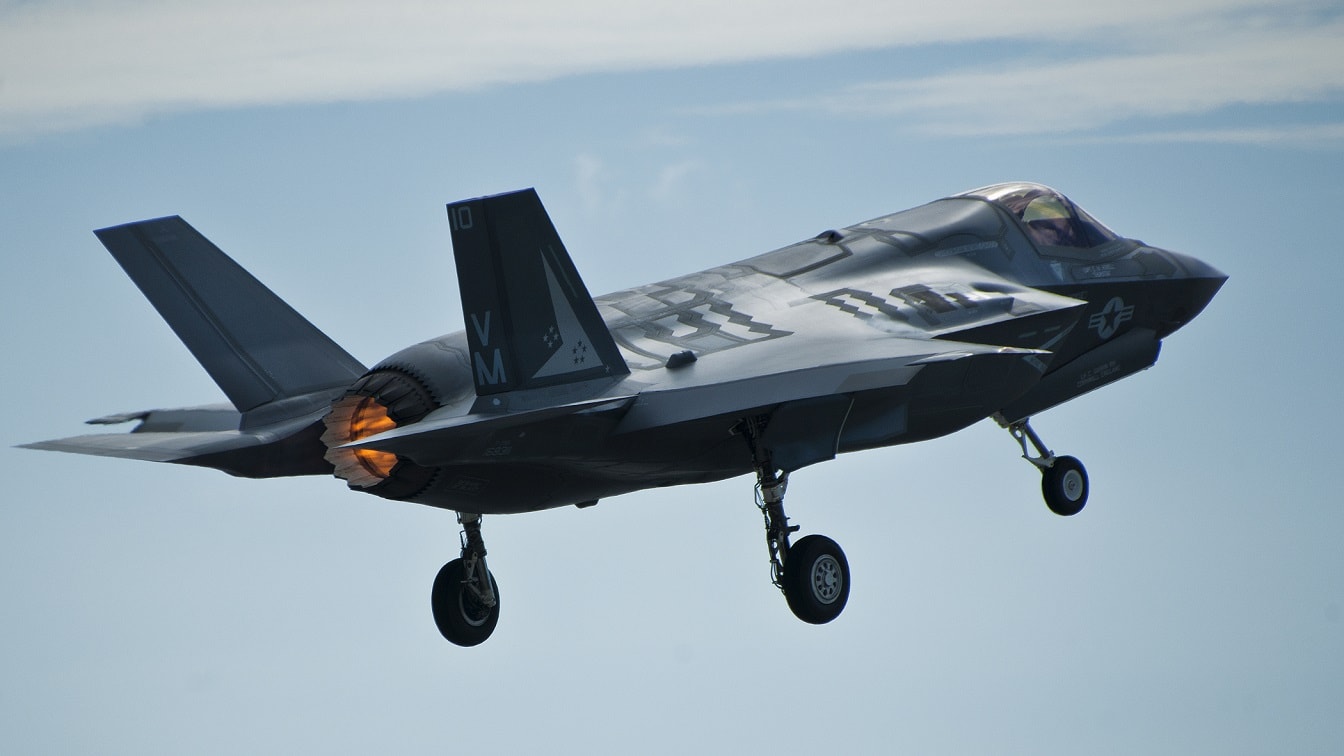In the post-Cold War world, the United States Navy was one of the only nations that operated aircraft carriers. The U.S. Navy still maintains the largest fleet of nuclear-powered supercarriers in the world – with France operating just a single nuclear-powered carrier. Yet, other nations have begun to build carriers as well. China launched its third carrier this summer, and has plans for a fourth, while India has also commissioned its first domestically-built flattop.
A question remains, however, with the advent of so-called carrier-killer ballistic missiles – and hypersonic weapons now entering service or in development – where such massive supercarriers are the way to go.
Here is an idea: Would the United States Navy be better served with a fleet of smaller amphibious assault ships that can operate as assault carriers with the Lockheed Martin F-35B?
Smaller Aircraft Carriers?
Such vessels might not replace the supercarriers but could actually serve as part of a Carrier Strike Group (CSG).
As USNI News reported, the U.S. Navy has already conducted an “experimentation” to see if such a concept has merit. Over the past summer, the USS Tripoli (LHA-7) explored how an America-class big-deck amphibious warship can better work in concert with a CSG while operating with F-35B Lighting IIs onboard.
“One day you can have F-35Bs on the flight deck, the next day you could have MV-22s and you can be putting Marines ashore,” explained Vice Adm. Karl Thomas on Friday during an event co-hosted by the Center for Strategic and International Studies and the U.S. Naval Institute.
“And so it just is a very versatile instrument and the fact that you have 14 5th-gen fighters on board – it’s an incredibly capable sensor,” Thomas added. “And so we’re still in the experimentation phase. We wanted to at least try to find out how would you integrate an assault carrier with a full-sized carrier. What missions might it be able to do?”
Lightning Carrier
Though not carriers, the America-class vessels have a displacement of about 45,000 long tons (46,000 tons) and thus are similar in size to the French Navy’s flagship aircraft carrier Charles de Gaulle. Moreover, the U.S. Navy’s amphibious assault ships are actually of comparable displacement to the Midway-class. They can carry about twenty F-35B aircraft.
The Navy has been considering how these warships could serve as “lighting carriers,” and that was put to test in June when LHA-7 took part in exercise Valiant Shield with the Nimitz-class supercarriers USS Abraham Lincoln (CVN-72) and USS Ronald Reagan (CVN-76).
“What we found is we distributed our three large decks for a period of time,” Thomas noted.
“There’s mission sets that I think that it’ll be designed for. I think that there are regions where it can operate in a better capacity,” he continued. “And then I think that because of the vertical takeoff nature of the F-35, you can find yourself putting F-35s in [Expeditionary Advanced Base Operations] and maybe bring them back out to the ship for some maintenance and you move them elsewhere. Maybe you latch them up with the carrier and you use the command and control of the electronic countermeasure capability of the [E2-D Advanced Hawkeye and the EA-18G Growlers]. So we’re still in the experiment phase.”
The U.S. wouldn’t be alone in utilizing the lightning carrier concept. Earlier this year, The Japan Maritime Self-Defense Force began converting its helicopter carriers and JS Izumo (DDH-183) and JS Kaga (DDH-184) into a carrier that can operate with the F-35B – marking the first time since World War II that Japan has operated a carrier with fixed-wing aircraft.
What the Experts Think
“While I don’t see the so-called lightning carrier replacing U.S. Navy aircraft carriers, the idea is certainly with many merits,” explained a former Trump White House National Security Council member who spoke to 19FortyFive on background. “The challenge is making enough of these assault ships and protecting them from the rise of Chinese and Russian anti-ship missiles. We need better and more numerous missile defense platforms for whatever we have in the water. If missile defense is not a top priority and defeating the threat of such missiles, any debate between bigger or small carriers is just academic.”
A Senior Editor for 19FortyFive, Peter Suciu is a Michigan-based writer who has contributed to more than four dozen magazines, newspapers, and websites with over 3,000 published pieces over a twenty-year career in journalism. He regularly writes about military hardware, firearms history, cybersecurity, and international affairs. Peter is also a Contributing Writer for Forbes. You can follow him on Twitter: @PeterSuciu.

